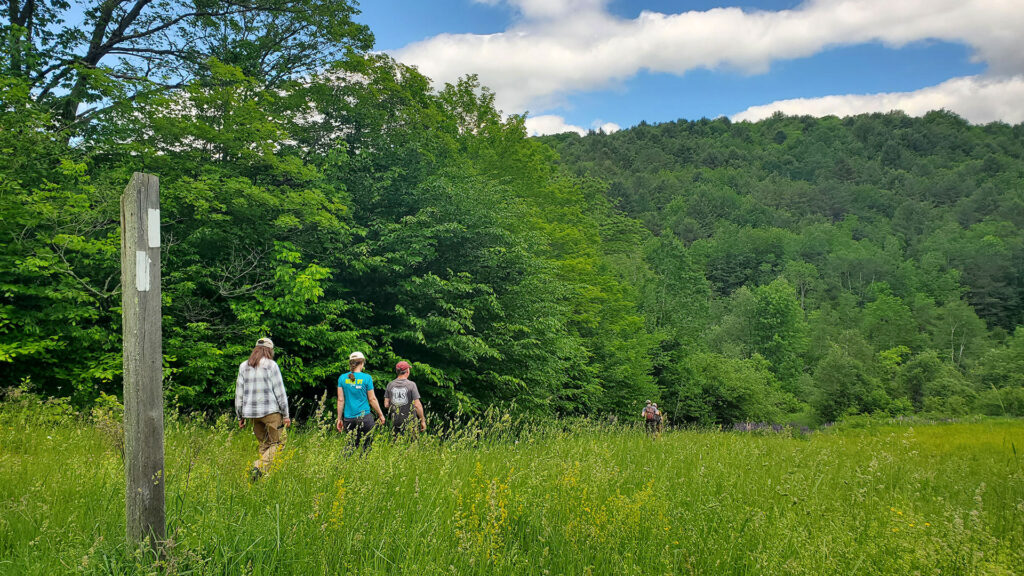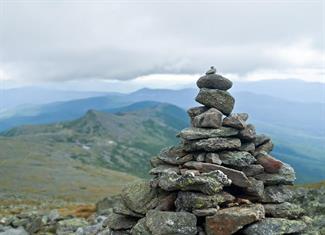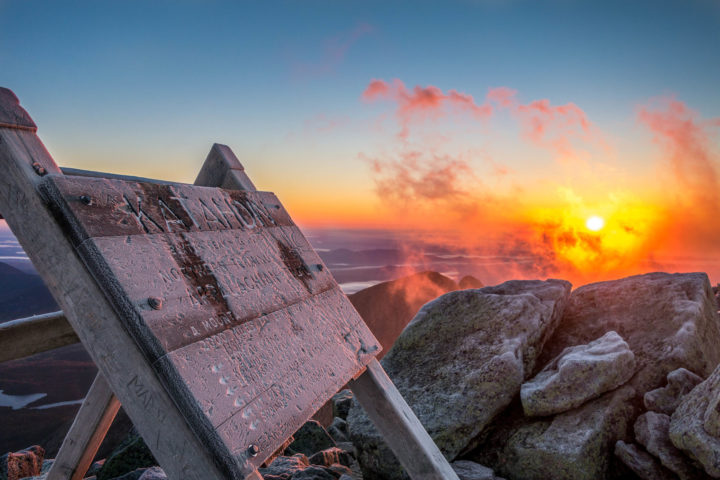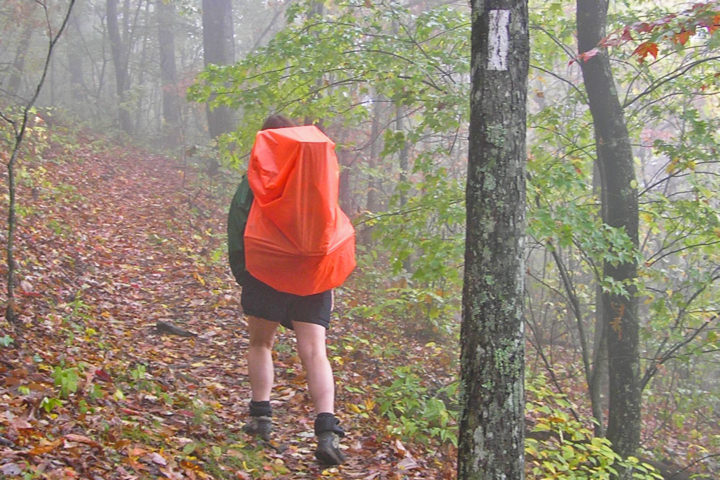By Caitlin Miller, ATC Information Services Manager
Finding Your Way on the Appalachian Trail
February 29, 2024
The Appalachian Trail (A.T.) is generally well-marked and well-traveled. However, most of the Trail is still in remote backcountry and hikers should maintain awareness of their surroundings to avoid getting lost. Here are a few tips for best practices when it comes to wayfinding on the A.T.
Always carry an updated paper map and a compass (and know how to use them!) in case you do get lost. Don’t rely on your cell phone for emergencies. Service is usually spotty at best, and cell batteries can die.
Pay attention to the white blazes. These are the 2” X 6” inch white painted rectangles that mark the A.T. If you haven’t seen a blaze in a while (5-10 minutes of hiking), turn around and retrace your steps until you see one.

A double blaze (one stacked on top of the other) generally means there is a change in the Trail and hikers should pay attention. In some sections, the top blaze will be offset in the direction the Trail turns.
Take extra care when stepping off the Trail to go to the bathroom, find a campsite, or get water. Even if you don’t anticipate going off the Trail, you may need to for an unexpected bathroom trip. If you do need to step off, keep the Trail or a landmark in view and always keep your pack with you.
Side trails are marked with different colored blazes. Blue is the most popular color, but there are many different colors used for side trails along the A.T. Pay close attention going down side trails so you can find your way back to the A.T.

These rock piles identify the route above treeline and where snow and fog may obscure paints blazes.
Know that cairns are intentionally placed rock stacks that are used above treeline or in treeless areas to mark the Trail. Cairns may also have white blazes, but not always.
Learn about where you’ll be going on the Trail and current conditions before you head out. Some sections of the A.T., especially in the White Mountains of New Hampshire, use the local names for sections of the Trail (and may even use yellow blazes instead of white to help them stand out in snow). Blazing and signs will be less frequent in designated wilderness areas. Trail maintenance will also be intentionally less obvious to help maintain the area’s wilderness character.
Learn more about what to do if you do get lost on the Trail and contact us anytime for more information on having a safe, fun visit to the Trail.
Discover More

Plan and Prepare
Hiker Resource Library
A collection of resources for hikers to stay safe, healthy, and responsible on the Appalachian Trail.

Plan and Prepare
Thru-Hiking
Thru-hiking the A.T. is the adventure of a lifetime. But trekking the 2,190+ miles of the A.T. is no easy feat — make sure you’re prepared!

Plan and Prepare
Safety
Learn about the hazards you may face when hiking the Appalachian Trail and how to avoid or prepare for them is the best way to stay safe.





